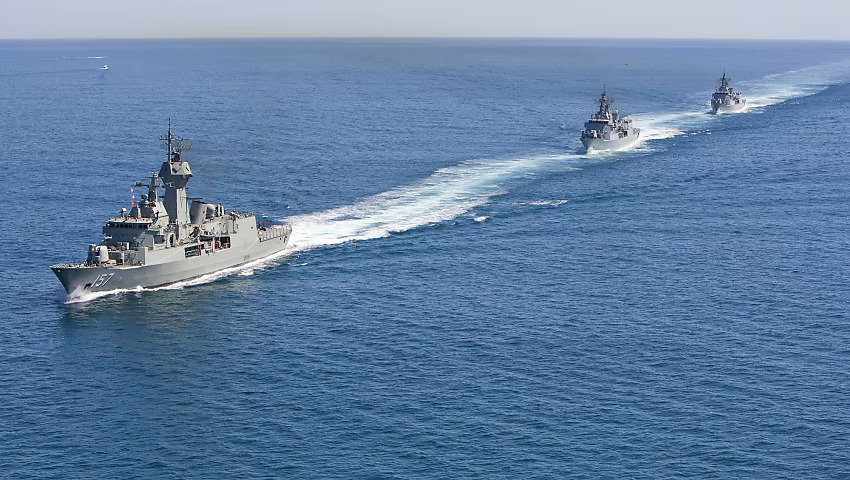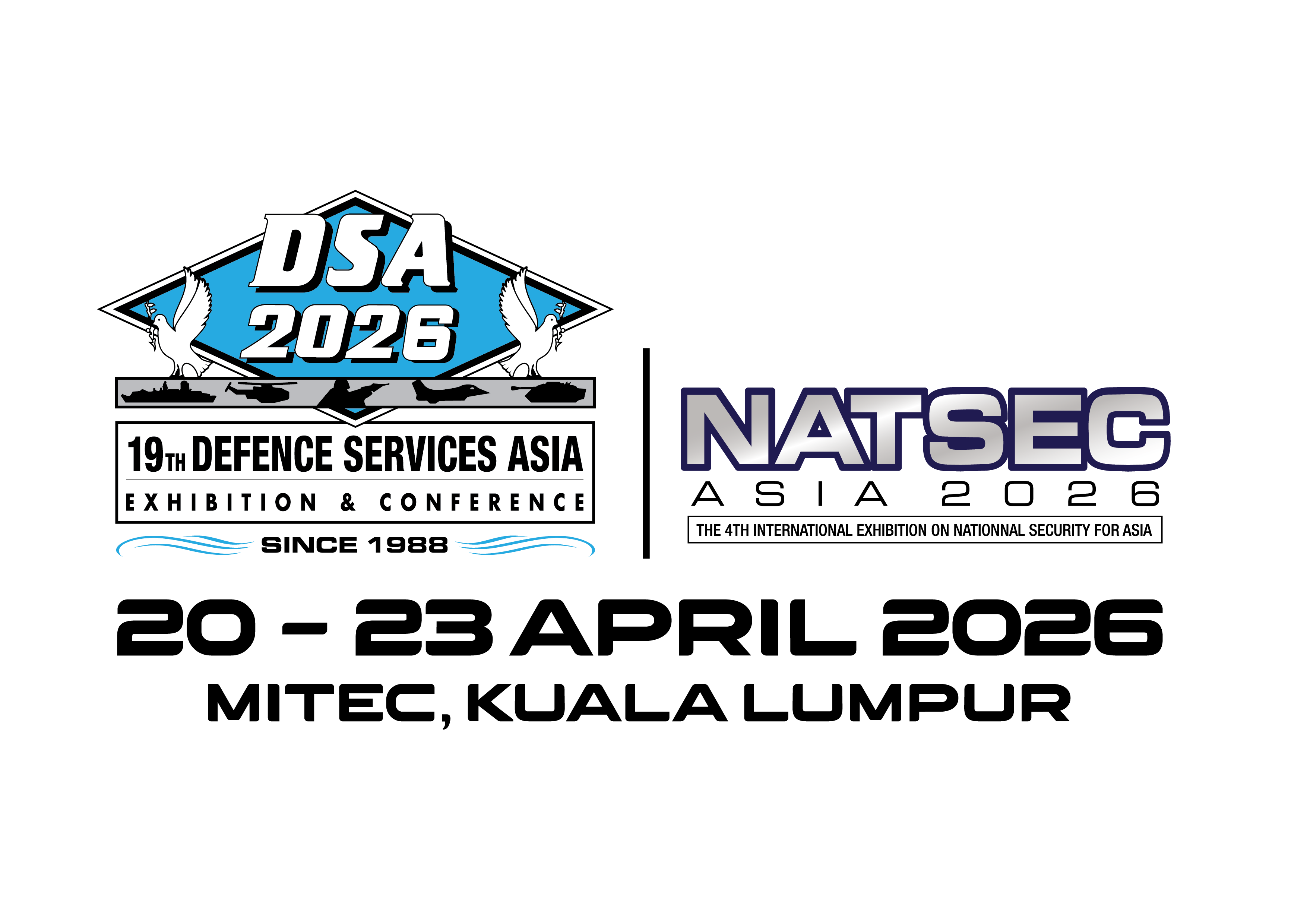INDUSTRY NEWS

Industry makes renewed calls for expanded naval capabilities
May 16, 2023
By: Stephen Kuper
As an island nation, Australia’s sovereignty, security, and prosperity is intrinsically linked to our maritime surrounds and the uncontested and unmolested access to the global maritime commons.
This reality is critically important in the light of mounting regional and global naval build ups and is the driving force behind the nation’s pursuit of the trilateral AUKUS agreement which will deliver the nation’s nuclear-powered submarine fleet, which has drawn extensive attention both at home and abroad.
At the core of this renewed emphasis, the long-awaited Defence Strategic Review (DSR) highlights the renewed importance of the nation’s maritime security, stating: “Australia’s Navy must be optimised for operating Australia’s immediate region and for the security of our sea lines of communication and maritime trade.”
In order to deliver this, the DSR has emphasised a three-pronged approach, renewing and reinforcing the nation’s commitment to the AUKUS trilateral agreement and the nation’s pathway to delivering the SSN-AUKUS, nuclear-powered submarines, and, what is described as, “an enhanced lethality surface combatant fleet, that complements a conventionally armed, nuclear-powered submarine fleet, is now essential given our changed strategic circumstances”.
Meanwhile, this renewed emphasis on an enhanced surface fleet is broken into two distinct tiers that are capable of “enhancing Navy’s capability in long-range strike (maritime and land), air defence, and anti-submarine warfare requires the acquisition of a contemporary optimal mix of Tier 1 and Tier 2 surface combatants, consistent with a strategy of a larger number of small surface vessels”.
However, in order to deliver this desired outcome, the government has initiated yet another “short, sharp” review into the size, composition, and nature of Australia’s future surface fleet force structure and the way in which it complements the nation’s future nuclear-powered submarine fleet.
To this end, the DSR announced: “We have recommended that the government directs an independent analysis of Navy’s surface combatant fleet capability to ensure the fleet’s size, structure, and composition complement the capabilities provided by the forthcoming conventionally armed, nuclear-powered submarines. The analysis must assess the capability requirements to meet our current strategic circumstances as outlined in this review. This should include assessment of cost, schedule, risk, and the continuous shipbuilding potential of each option. This examination should be completed by the end of Q3 2023.”
Recognising the now immense challenges facing the nation’s naval force, industry is reinforcing the findings of the review and appears to be presenting government with solutions.
Dario Deste, general manager of the naval vessels division at Fincantieri, has reinforced the findings of the DSR, while also providing broader solutions to help inform the decision-making process.
Time to get it right
“The DSR rightly acknowledges the Navy faces the most significant challenges of the three services. Australia must now take advantage of the upcoming ‘short and sharp’ naval review to secure the most effective capabilities it can to meet its strategic challenges,” Deste states.
It is critical to understand that in this instance, the government is calling for a numerical expansion of the Navy’s surface fleet, with the proposed force structure to incorporate “Tier 1” and “Tier 2” surface combatants to provide for “increased strike, air defence, presence operations and anti-submarine warfare”, the review unpacks this, stating: “Enhancing Navy’s capability in long-range strike (maritime and land), air defence, and anti-submarine warfare requires the acquisition of a contemporary optimal mix of Tier 1 and Tier 2 surface combatants, consistent with a strategy of a larger number of small surface vessels.”
This seemingly indicates an expansion of the Royal Australian Navy’s surface fleet, bulking the fleet out with smaller, corvette style vessels to provide a continuous, regional presence, with vessels that aren’t as focused on high-intensity conflict, but still capable of adding something to any prospective fight.
These “Tier 2” vessels would be complemented by larger, more complex “Tier 1” vessels, similar to the Hobart Class and Hunter Class, respectively — adding to this, the review states: “This would significantly increase Navy’s capability through a greater number of lethal vessels with enhanced long-range strike (maritime and land) and air defence capabilities, together with the ability to provide presence in our northern maritime approaches.”
This split in capabilities, Deste believes, proves essential to Australia’s long-term ambitions to securing its immediate region and delivering on “impactful projection” as the core basis of the new “National Defence” strategy.
“If Australia is going to make a major contribution to peace and security across the Indo-Pacific theatre, it will need a lot more naval surface ships. While the DSR recommends a further naval review to develop its surface vessel fleet — due in the third quarter of this year — Australia must acknowledge that it cannot rely on existing plans for the delivery of new surface vessel capabilities to underpin its maritime security,” Deste explains.
Going further, Deste identifies that there is a growing naval capability gap which will have a dramatic impact on Australia’s capacity to deliver impactful projection and respond to the potential for increased Chinese aggression, stating, “The window to respond to potential Chinese aggression is closing. At this stage, it has been reported that the Hunter Class frigates are likely to be delivered late. The six current Collins Class submarines are in the later stages of their in-service life. And when operational, the newly commissioned offshore patrol vessels are suitable only for inshore operations. All this points to a growing maritime capability gap that exists now in terms of the number of vessels the Navy has, their capability and when new vessels will become available.”
Draw on industry expertise
Without a doubt, industry has a horse in the race, we can’t get around that. The economic incentives are without a doubt immense and shouldn’t be ignored, however, industry also presents significant experience and expertise about what it takes to not just deliver capability in a timely manner, they also have the requisite experience and skills to help inform Defence’s response to challenges.
A central component for delivering Navy’s requirements is the need to deliver proven capabilities with minimal changes.
No one will deny that Australia’s defence ecosystem is massively guilty of constantly reinventing the wheel, whether it is in the innovation, research and development space, or across capability definition, acquisition and delivery stage, this ultimately needs to stop.
While government has identified that it will shift to an emphasis on some capability is better than none will ultimately accelerate the delivery of critical capabilities, the delivery existing capabilities will go a long way to mitigating the risk of delay, cost overrun and capability gaps.
“Too often, defence projects have been subject to significant risks on delivery timetables. Australia needs sea-proven ships in the shortest time possible with guarantees that delivery will be on schedule. Ultimately, it should hedge against capability risks and provide an immediate boost to Australia’s maritime capability,” Deste explains.
Unpacking this further, Deste seemingly rebukes Defence Minister Richard Marles’ statements around smaller, lower-tier, and more numerous vessels, stating, “This will require larger, multi-mission vessels such as frigates and destroyers that have air warfare, surface warfare, and anti-submarine capabilities. But it also should prioritise the need for augmentation through mid-level capabilities.
“These would be fast, missile-armed, corvette-type vessels. These smaller vessels could be acquired in large numbers relatively cheaply to significantly expand the fleet. This mix of additional new tier two vessels with tier one destroyers and frigates provides a resource-efficient augmentation to Navy. They will add distributed mass and lethality to guard Australia’s sea lanes.
“A fleet of such ships would free up Australia’s heavier combat vessels from basic patrol tasks and would enable operations in combined task forces. New sea-proven vessels can provide Australia with an immediate capability that would enable the ADF with significant long-range lethality, with the flexibility to scale to the threat environment,” Deste explains.
While many commentators have sought to highlight the suitability of platforms like an up-gunned variant of the Arafura Class or Navantia’s Avante Class corvettes with their comparatively smaller operational ranges as viable solutions to adding much needed bulk to the Navy’s surface fleet at the cost of larger, more costly vessels like the Hunter Class frigates.
Both of these solutions present vessels designed for long-range patrol, in an offshore patrol environment, not for delivering high-end warfighting capabilities to the Navy, raising a particularly important question, namely, if we were to pursue one of those options, are we actually delivering “real” capability to the Navy?
Equally, it is important to ask, is there a middle path? Can we balance our nuclear-powered submarine ambitions with a fundamental reshaping and expansion of the surface fleet?
The answer is yes, however, we need to be strategic in our thinking and requests of Navy.
Final thoughts
Ultimately, the best way to effectively expand the combat power of the Royal Australian Navy is to focus on combat vessels, not up-gunned constabulary vessels, mainly designed to potter around the Mediterranean or Baltic seas.
Critically, there has been a recognition that Navy, like the broader ADF, needs to grow in personnel and firepower, however, it can’t be half measures, rather, we need to accept that Navy, in particular, will require a major overhaul and tactical and strategic rethink in its structure and priorities to better deliver impactful projection.
Additionally, while industry expertise and experience is critical and informative, it is important to avoid the pitfalls of being presented with a solution that does 60 per cent of the mission in a timely manner, when in reality, we need an 80 per cent capability.
While compromise is important to delivering the capabilities Australia now requires, we can’t compromise too significantly, in this, Defence needs to be far less passive and be far more direct with industry.
Source:
https://www.defenceconnect.com.au/maritime-antisub/11966-industry-makes-renewed-calls-for-expanded-naval-capabilities

